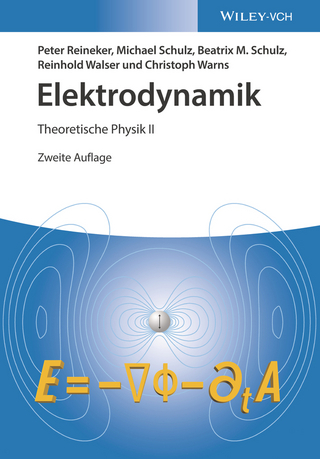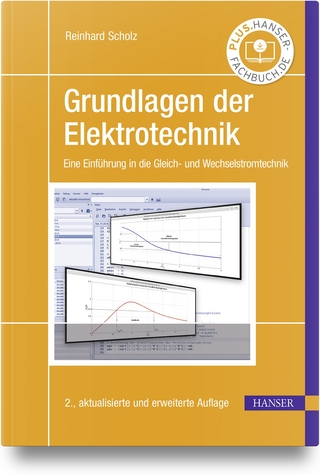
Energy Storage Systems
Oxford University Press (Verlag)
978-0-19-285800-9 (ISBN)
Energy systems are encountered in daily life, whether through smartphones, laptops or cordless tools. Cars using fossil fuels are being replaced with electric and battery powered drives, and storage solutions are being implemented to better integrate renewable energies into the grid.
Energy Storage Systems introduces the different storage technologies available today. It begins with mechanical and electrical storage and describes in detail electrochemical storage technologies such as lead and lithium-ion batteries. However, this book aims to explain not only what storage technologies exist but also how these storage technologies are applied in storage systems. Therefore, this book provides a short introduction to requirements management and system engineering to explain how storage systems are designed.
Furthermore, the book explains the most important power conversion techniques. The technologies presented are applied in many application examples throughout the book and range from solar power storage systems to battery supported mobile phone masts and commercial vehicles equipped with a hybrid drive system.
Armin U. Schmiegel studied Physics at the University of Oldenburg and achieved a doctorate in physics at the University of Marburg. He has held various positions in industrial research and development including at GE and Bosch. An expert in power electronics and storage systems, he has held the position of Head of Development at REFU Elektronik, later REFUdrive, since 2015.
1: Introduction
2: Purpose of energy storage systems
2.1 Introduction
2.2 What storage is used for
2.3 Application of energy storage systems
2.4 Conclusion
Chapter summary
3: The general description of energy storage systems
3.1 Introduction
3.2 Mathematical description of structure and function of storage systems
3.3 Evaluation of system designs from a financial point of view
3.4 Conclusion
Chapter summary
4: Introduction to requirement engineering and system design
4.1 Introduction
4.2 Requirements and systemcomponents
4.3 General requirements for energy storage systems
4.4 Basic components of a storage system
4.5 Conclusion
Chapter summary
5: Power conversion
5.1 Introduction
5.2 Electronic components for power conversion
5.3 Description of power transfer units from a systems engineering point of view
5.4 General requirements for storage systems that need electrical components
5.5 Conclusion
Chapter summary
6: Mechanical storage systems
6.1 Requirements for mechanical storage systems
6.2 Energy storage using potential energy - pumped storage power plants and other concepts
6.3 Energy storage by using rotational energy - The flywheel storage
6.4 Energy storage using potential energy part 2 - Restoring force of a spring
6.5 Application example DS upgrading a pumped hydro storage plant for the power market
6.6 Conclusion
Chapter summary
7: Electrical storage systems
7.1 Introduction
7.2 Storage of electrical current
7.3 Voltage storage systems
7.4 Application example - recuperation of a passenger lift
7.5 Conclusion
Chapter summary
8: Electrochemical storage systems
8.1 Introduction
8.2 General considerations on electrochemical storage technologies
8.3 Lead acid battery
8.4 Lithium ion batteries
8.5 Application example DS residential solar storage system
8.6 High temperature batteries
8.7 Redox flow batteries
8.8 Summary
Chapter summary
9: Chemical storage systems
9.1 Introduction
9.2 General function and requirements
9.3 Hydrogen as a storage technology
9.4 Methanisation - Power to gas or power to liquid
9.5 Conclusion
Chapter summary
10: Demand side management
10.1 Basic functions and requirements
10.2 Application Example DS demand side management for a commercial and residential complex
10.3 Conclusion
Chapter summary
Index
References
Free
| Erscheinungsdatum | 17.05.2023 |
|---|---|
| Zusatzinfo | 210 b/w and colour line drawings |
| Verlagsort | Oxford |
| Sprache | englisch |
| Maße | 175 x 28 mm |
| Gewicht | 1026 g |
| Themenwelt | Naturwissenschaften ► Physik / Astronomie ► Elektrodynamik |
| Technik ► Elektrotechnik / Energietechnik | |
| ISBN-10 | 0-19-285800-9 / 0192858009 |
| ISBN-13 | 978-0-19-285800-9 / 9780192858009 |
| Zustand | Neuware |
| Haben Sie eine Frage zum Produkt? |
aus dem Bereich


